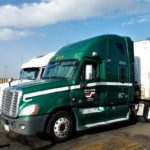What Does It Mean to You?
In January of this year, a new Memo of Understanding (MOU) was reached between a number of medium and heavy duty commercial vehicle manufacturers and the Aftermarket providers of vehicle service. This historic agreement applies to the OEM release of all technical information and programming protocols necessary to maintain the emission controls on the vehicles to which it applies.
What this means is that the maintenance of the complex integrated emission controls, such as on-board computers, EGR valves and EGR coolers, exhaust manifolds and piping, diesel particulate filters and selective catalytic reduction systems, are now to be maintained by ANY facility that purchases licenses from the vehicle and engine manufacturers who provide the original components. The agreement applies to medium and heavy duty vehicles over 14,000 GVW and manufactured after 2009. It excludes motor homes and vehicles with off road engines.
The first laws concerning RTR were enacted by the State of Massachusetts. The new MOU is not legally binding, but is an indication of the recognition of the need for freedom of maintenance choices by owners of commercial trucks. It also provides the means by which every heavy duty vehicle will remain emissions compliant throughout its years of service. Below are some examples of the need for constant vigilance for the causes of emission control failure:
In the first photo, the EGR cooler jacket has become clogged with diesel particulate matter (PM or Soot).
In the second photo the EGR cooler has cracked internally and allowed coolant to leak into the entire exhaust system and into the engine oil.
The provisions of the MOU are extensive and very important for the repair facility to understand and apply. They include:
1. The OEs will supply the same information and same limitations that they give to their dealers.
These include:
- Location of critical sensors.
- Wiring diagrams.
- Ability to reflash on-board computers.
- As-built VIN to OE part number information, often called line settings.
- Any specialized tools.
- The OEs WILL NOT SUPPLY TRAINING.
2. Licensing at fair and reasonable prices.
3. Light/HD OEs may adopt the existing automotive MOU.
Implementing the RTR requires attention to the makes and models for which licensing should be sought. The licenses are not inexpensive. Secondly, extensive training of expert technicians is required if reprogramming of vehicles is contemplated. Every OE has its own protocol which can be run off of the same PC with common interface cabling as long as the licensed software has been downloaded.
With this momentous agreement, the entire vehicle service industry should now be able to agree on common practices that insure the quality of maintenance required in today’s commercial vehicles.





